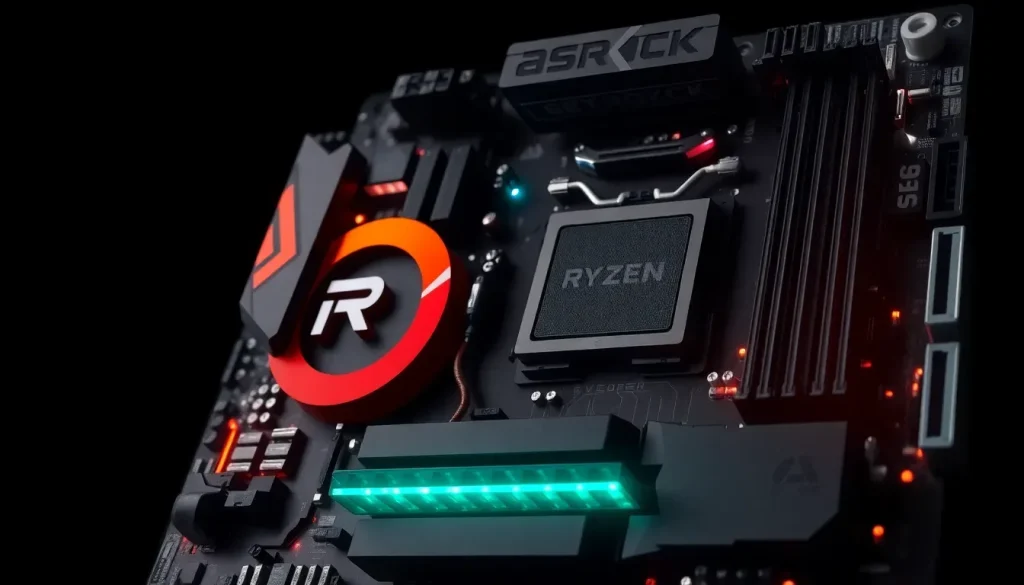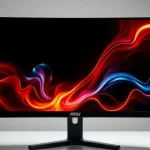ASRock motherboard and Ryzen 9000 issues with sleep states and voltage

In the world of PC gaming and high-performance computing, the introduction of the Ryzen 9000 series was met with great anticipation. However, shortly after their release, reports began to emerge regarding serious issues, particularly with certain motherboards, leading to failures that left many CPUs non-functional. The situation escalated when the Ryzen 7 9800X3D was launched, resulting in a noticeable increase in complaints from users. This article delves into the investigation surrounding ASRock motherboards and the Ryzen 9000 series, highlighting the potential role of power management features such as hibernation and sleep modes in these failures.
Investigating the issues: Gamers Nexus takes action against ASRock
The ongoing saga of faulty Ryzen 9000 CPUs has prompted renewed scrutiny into ASRock's motherboards. Despite numerous reports and investigations, ASRock has been reticent in addressing the root causes of these issues. Initially, the company attributed the failures to AMD's Precision Boost Overdrive (PBO) technology. However, Gamers Nexus, a prominent tech review and analysis channel, has taken it upon themselves to conduct rigorous testing in an attempt to uncover the truth behind these CPU failures.
Over the past few months, ASRock's responses have been less than satisfactory, leading to frustration among users and reviewers alike. Even after multiple BIOS updates purportedly aimed at resolving the issues, reports of fried CPUs continued to surface. The situation became untenable, prompting Gamers Nexus to embark on a comprehensive testing regimen involving:
- Extensive testing over a period of five weeks.
- Utilization of both BIOS versions 3.15 and 3.25.
- Close monitoring of an ASRock B650 Steel Legend WiFi motherboard.
Through these efforts, Gamers Nexus aimed to understand the specific conditions contributing to these catastrophic failures, shedding light on a situation that has left many Ryzen 9000 users in the dark.
Power management issues: The role of hibernation and sleep modes
As investigations progressed, Gamers Nexus began to uncover patterns suggesting that the hibernation and sleep modes of ASRock motherboards might be linked to the failures experienced by Ryzen 9000 CPUs. The testing revealed that, upon resuming from these low-power states, the CPUs were subjected to fluctuating voltage levels that could potentially lead to damage.
For instance, with the BIOS 3.25 update, researchers noted minimal changes in the thermal design current (TDC) and electrical design current (EDC), with only slight increases observed. However, voltage measurements revealed significant discrepancies:
- TDC increased from 112A to 112.6A.
- EDC shifted from 114.6A to 115.2A.
- Notably, the PPT Limit dropped dramatically from 1,000W to 270W.
Furthermore, the voltage of the System on Chip (SoC) displayed a concerning increase from 1.02V to 1.190V when entering and exiting hibernation or sleep modes, suggesting that power management features might need reevaluation.
Further findings: Impact of BIOS updates
In a subsequent round of testing utilizing BIOS version 3.40, ASRock introduced a new feature called "Fixed SOC Voltage." This parameter was expected to stabilize voltage levels, although the company had previously denied that fluctuating voltages were a contributing factor to CPU failures. Interestingly, enabling this feature resulted in a voltage drop of 70mV under default conditions, indicating a potential avenue for mitigating the issues.
Additional tests conducted under the 3.40 BIOS revealed:
- A significant drop in voltage from 1.255V to 0.650V upon resuming from low-power states.
- Observed voltage spikes in VDDIO_MEM reaching up to 1.12V, though not deemed dangerous.
- CPU Load Cycling tests with Cinebench showed voltage variations, yet were not considered critical.
Through these findings, Gamers Nexus concluded that while the hibernation and sleep modes could exacerbate the issues, they were not the sole reason behind the failures. The inconsistency of the results indicates a complex interplay of factors that require further investigation.
Recommendations for Ryzen 9000 users
Given the ongoing uncertainty surrounding the relationship between ASRock motherboards and Ryzen 9000 CPUs, Gamers Nexus has issued several recommendations for users:
- Avoid using hibernation and sleep modes for extended periods.
- Consider keeping the system in an active state to prevent voltage fluctuations.
- Monitor CPU performance closely after BIOS updates for any anomalies.
While these steps may not guarantee protection against failures, they can potentially mitigate the risk of encountering issues related to power management.
The broader implications for motherboard manufacturers
This situation with ASRock and the Ryzen 9000 series raises significant questions about quality control and reliability in motherboard manufacturing. As users demand higher performance and stability from their systems, the importance of rigorous testing and transparent communication from manufacturers becomes paramount. The repercussions of these failures extend beyond individual users, potentially impacting the reputation of brands and the confidence of consumers in the long term.
As the technology landscape continues to evolve, it’s crucial for manufacturers to prioritize quality and user safety. Ensuring that products can withstand the rigors of modern computing without failure is essential for maintaining trust in a competitive market.
Conclusion and outlook
The ongoing investigation into the relationship between ASRock motherboards and Ryzen 9000 CPUs highlights the complexities of modern computer technology. While Gamers Nexus has made significant strides in uncovering potential causes for these failures, the search for definitive answers continues. Users are left to navigate a landscape of uncertainty, but with diligence and careful monitoring, they can take steps to protect their investments.




Leave a Reply